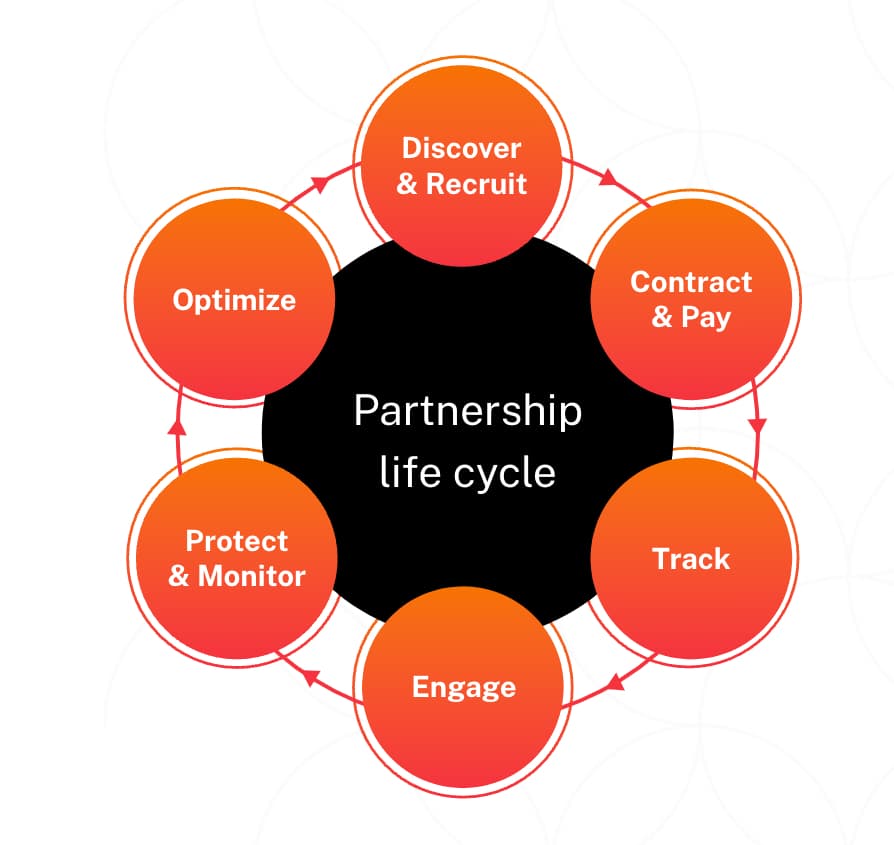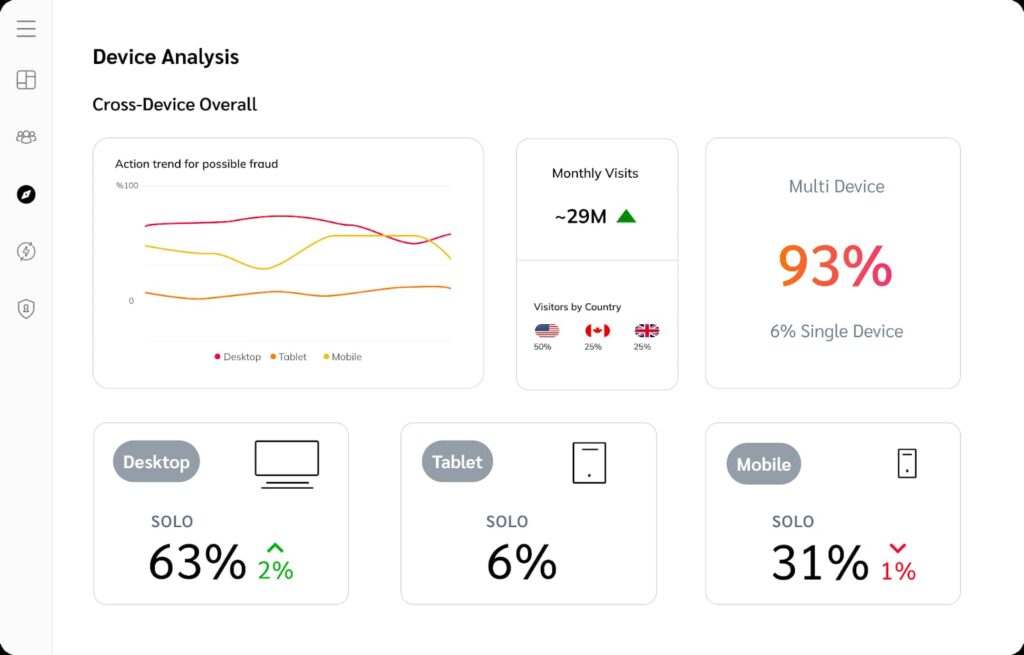In this guide you’ll discover answers to questions like:
- 5 Questions brands should consider about affiliate and influencer marketing
- What are the key differences between an affiliate and influencer program?
- What should leaders consider before adding partnerships to their marketing efforts?
- What can leaders do to optimize their program and avoid roadblocks?
- What metrics are essential for measuring an affiliate and influencer campaign’s success?
- Are affiliate programs best for lower funnel conversions?
Affiliate and influencer partnerships can both contribute to a full-funnel campaign when set up correctly. Reports estimate affiliate marketing to be worth $15.7 billion by 2024. Conversely, 23 percent of brands devote more than 40 percent of their digital marketing budget to influencer campaigns.
But how are marketers spending between these two channels? Spoiler alert: It’s an even split. Influencer Marketing Hub reports that more than 80 percent of surveyed respondents will allocate a budget to influencer and affiliate marketing this year.
Tye DeGrange, Founder and CEO of the growth marketing agency, Round Barn Labs, works with marketing leadership teams to combine affiliate strengths with expertise in other disciplines like data, analytics, incrementality, paid marketing, UX, conversion rate optimization, and organic growth. Our team sat down with Tye to dispel common myths surrounding affiliate and influencer channels and show you how both channels are crucial to growth.
Key takeaways
- Influencers can deliver a positive ROI
- Affiliates aren’t limited to bottom-of-funnel conversions
- Both channels can hit your marketing goals, with optimal results happening over time
- Affiliates and influencers can deliver full-funnel marketing campaigns
- Select the right attribution models and implement well-monitored tracking technology
5 questions brands should consider about affiliate and influencer marketing
As a growth agency, Tye and his team spend considerable time educating marketing leaders on the benefits of having affiliates and influencers as part of their marketing strategy. Marketing leadership teams should consider these five points when adding affiliates or influencers to their marketing mix.
1. What are the key differences (and misconceptions) between an affiliate and an influencer program?
Influencer and affiliate marketing campaigns share similar principles. At their core, they involve recruiting relevant partners who drive valued actions, whether engagement, sales, downloads, followers, or something else.
Each of the two can deliver full-funnel campaigns. But influencers are generally nearer the top of the funnel than affiliates––especially on channels like TikTok and YouTube.
As a result, managers often believe influencers can’t bring in a positive ROI when paid a flat fee. This is false. Influencer campaigns can (and should) bring a high ROI when set up correctly (more on that later).
Influencers are closely connected to their brand––their community is more personal. Therefore, there has to be more buy-in on both ends. Before collaborating, influencers should ask themselves, “Do I believe in this brand or not?” Not all affiliate business models prioritize a brand’s success over influencers collaborating with brands on multiple posts.

Affiliate is typically multichannel driven and based on pay per action. It can skew toward the lower funnel without proper management, and if paired with influencer, it can be a powerful lever for full-funnel conversions.
Influencers, in many cases, need more management than affiliates. Incentives include gifting and flat fee payments.
While influencer is often unique to channels like Facebook, Instagram, TikTok, and YouTube, affiliate can include media buyers using Google, paid ads, comparison shopping engines, and high-quality content review sites.
With that in mind, influencers and affiliates have their wheelhouses and are part of their communities. When you combine affiliate and influencer campaigns, you cover all bases.
It’s worth running simultaneously –– affiliate programs can take more of an always-on approach than influencer campaigns. To make them relevant, brands can push an offer related to exclusivity, seasonality, and product changes.
2. What should leaders consider before adding partnerships to their marketing efforts?
First, leaders need to set realistic timelines. Marketing managers sometimes believe affiliate and influencer marketing campaigns will follow similar models to their paid search or social campaigns.
But it often takes longer to see results. After all, affiliate and influencer campaigns deal with human relationships, not algorithms and datasets.
When teams start with paid search or social programs, it can take around three months to optimize content for the algorithm and establish a solid creative cadence.
But a good benchmark to see some results from affiliate and influencer marketing would be six months. It takes time to build the initial relationships, collaborate, and run experiments—so it’s important to account for this longer cycle.

During the early days of a campaign, brands may not necessarily see the highest conversion numbers. It may be easy to feel disillusioned initially, but it’s important to remember the campaigns do important work in seeding awareness and consideration.
If it’s a viable partnership, you can expect the conversion rate to increase on the second post. While marketing leaders may aim for partnership campaigns to make up 10 to 30 percent of their overall revenue, reaching that stage might take 12 months.
Before starting, work closely with your partners to establish a realistic forecast for the next three to twelve months. It’s all about crafting a solid partnership––it’s not a one-and-done model or a quick win.
For best results, brands should consider how it can entice influencers to collaborate with them. For example, the Swedish fashion brand Ellos used flexible performance-based commission rates for different influencers. Doing this helped them cut costs and improve its ROI––increasing the conversion rate to four percent.

Next, think about who will provide expertise and guidance in-house. For brands with the resources, pairing an agency partner with an experienced in-house affiliate manager is ideal.
Agencies should strive to free up their clients’ time by taking on 5 to 40+ work hours weekly. By doing so, brands can focus on the project and dedicate only 1 to 5 hours weekly. True collaboration lets the client invest its time into discussions around product development, seasonal trends, and all the other work it has to do internally.
3. What can leaders do to optimize their program and avoid roadblocks?
Leaders should strike a delicate balance of guiding without blocking their partners’ creativity. Be too stringent, and you risk stifling creativity. But if you’re too relaxed, creatives may not fully understand your product or ultimate goals.
In the beginning, provide partners with brand guidelines and discuss the general terms and conditions of the agreement. But as the campaign kicks off, let go and allow the influencers and affiliates to use their voice and skills to promote your brand authentically to their audience.
Test campaigns regularly to figure out what resonates with your target audience—and let your partners experiment and see what works.
Work with your partners to determine the:
- Hypotheses
- Result
- Lesson
- Final recommendation
Using that framework will help you and your partners better understand why certain campaigns work.
4. What metrics are essential for measuring an affiliate and influencer campaign’s success?
Leaders sometimes need help evaluating the success of an affiliate or influencer campaign and identifying the key metrics they should pay attention to.
Examine how customers interact with your brand in terms of revenue, average order value (AOV), and percentage of new customers.
Some questions to answer include:
- Are they net new customers?
- Are they returning products?
- Are they making repeat purchases?
- Are they referring people?
These answers will help you understand how campaigns are impacting your bottom line.
Next, analyze the data over time and evaluate which partners are most likely to drive a new customer than those one-off blanket payouts.

Sometimes leaders miss that opportunity to analyze the data in the month that the transaction happened, but over time in cohort analysis, you’ll better understand if the partner drives value.
Brands should also set up the correct attribution, including the right tools and tracking systems.
Ultimately the longer the program runs, the better results you see. When you have systems in place, it becomes much easier to forecast a campaign’s likely success.
For instance, if you only use a last-click attribution model, you may inadvertently discount your influencer’s social content’s impact on the conversion. If a consumer saw your influencer’s Instagram post before clicking a paid search ad, your influencer’s content wouldn’t receive credit.
Tools like impact.com can give you a full multi-touch view of what happens within the influencer and affiliate channels and how that journey happens across multiple channels. You can see if an influencer introduced a shopper before a content site continued the conversation.
A full panoramic view is essential for knowing how to credit conversions.

For example, before working with impact.com, Sephora found tracking challenging and needed detailed partner metrics. impact.com’s reporting tools introduced the team to in-depth reports and data to optimize partner and different segment performance. Ultimately, these tools helped Sephora grow to $7.4 million in revenue from 293 partners.
5. Are affiliate programs best for lower funnel conversions?
It’s a common myth that affiliate programs only work at lower stages of the funnel. This simply isn’t true. They work well at all stages of the funnel. There’s a partner for every channel. That’s ultimately the beauty of partner marketing.
For example, using high-quality content sites, influencer reviews, and video platforms, you can use the affiliate channel to pay high-quality media buyers on a performance basis to introduce people to your brand and get them closer to conversion.
Key takeaway: Reach your ideal audience with affiliate and influencer marketing channels
Tye’s myth-busting answers highlight the true value of what affiliate and influencer marketing channels can deliver for your brand. The key to unlocking serious ROI is to set realistic goals, establish strong partnerships, and implement solid attribution systems. The best part of launching affiliate and influencer campaigns is that it can become a staple in your long-term growth.
Want to learn how to run and maintain successful affiliate programs? Check out our free online expert-level affiliate and partnerships certification.
Key takeaways:
- Influencer and affiliate programs work at all stages of the funnel
- Both channels can hit your marketing goals, with optimal results happening over time
- Affiliate campaigns can work well year-round
- Influencer programs can tap into hard-to-reach communities
- Select the right attribution models and implement well-monitored tracking technology
Check out these additional reading materials:




